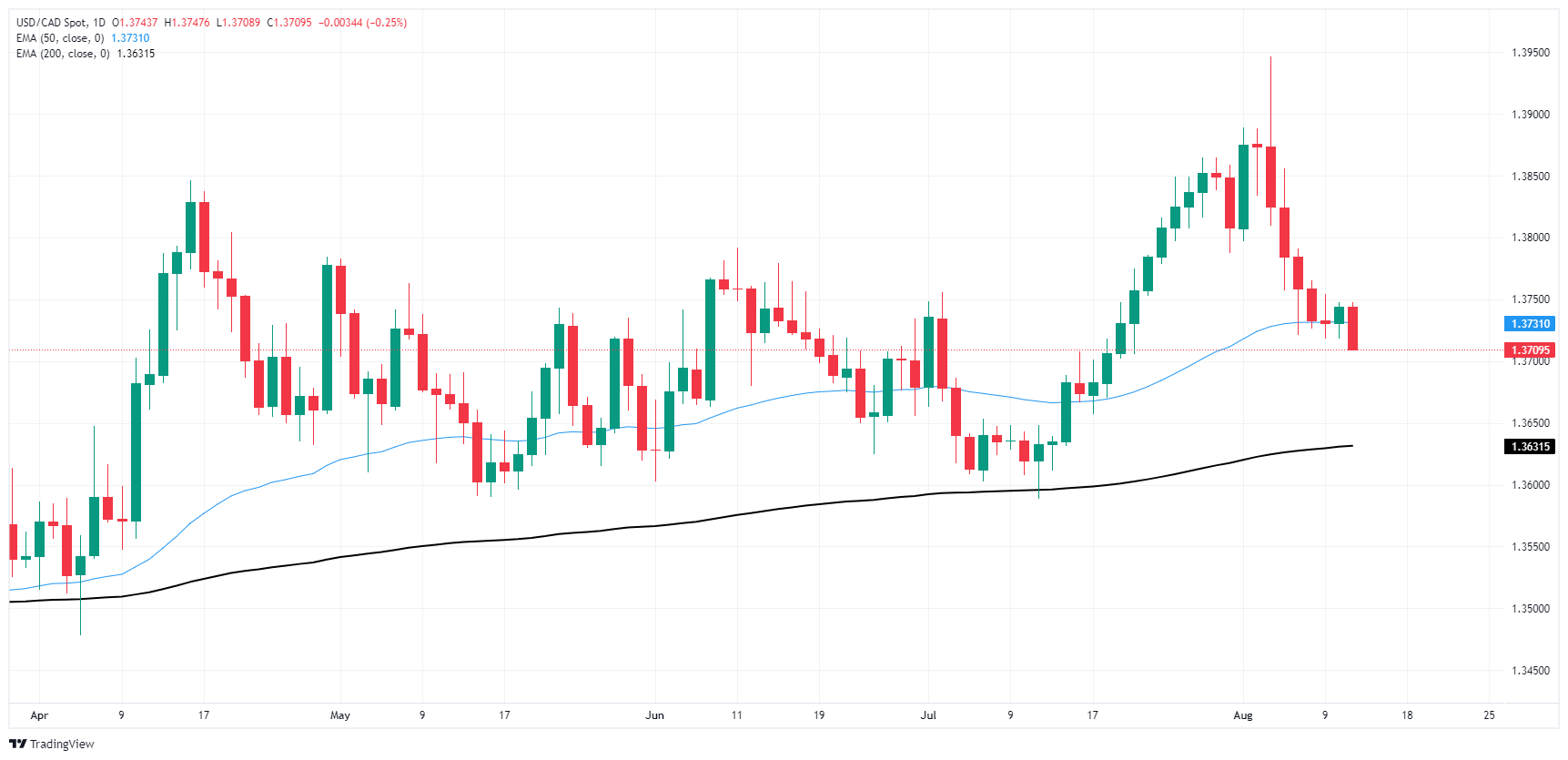- The Canadian dollar had little strength on Tuesday, but the US dollar was weaker.
- Canada remains absent from the economic calendar as markets focus on inflation figures.
- US PPI inflation cooled further, US CPI inflation in focus for Wednesday.
The Canadian Dollar (CAD) found higher ground against the Greenback but otherwise performed poorly across the board of major currencies on Tuesday. Market sentiment has tilted to the upside after US Producer Price Index (PPI) inflation retreated in July, prompting a return to bets for a double rate cut by the Federal Reserve (Fed) in September.
Canada remains absent from the economic data calendar this week, leaving traders to focus exclusively on the upcoming release of US Consumer Price Index (CPI) inflation on Wednesday. US CPI inflation is expected to continue the cooling trend towards the Fed’s 2% annual inflation target.
Market Movers: USD Down Against CAD
- The CAD weakened on Tuesday, but gained a quarter of a percent against the USD.
- US PPI inflation edged down to 2.2% year-over-year in July, less than the 2.3% forecast and retreating further from the revised 2.7% in the prior period.
- Cooling US inflation figures hit the Dollar, sending the USD lower across the board.
- Markets are still awaiting the release of US CPI inflation on Wednesday, which is expected to be in line with the overall easing of inflationary pressures.
- Rate markets see increased odds of a double 50-basis-point cut in September from the Fed, up from the start of the week but still below last week’s peak of 70%.
Canadian Dollar Price Forecast: Falling Dollar Drags USD/CAD Down from 1.3750
USD/CAD fell towards 1.3700 on Tuesday, retreating below the 50-day exponential moving average (EMA) at 1.3730. The pair has fallen further from the 1.3750 technical level as pressures mount on the greenback, sending the CAD to three-week highs against the US dollar.
Long-term technicians still favor long positions as the pair continues to trade above the 200-day EMA at 1.3630, but upside momentum remains limited after USD/CAD bidders failed to capture the 1.3950 level early last week.
USD/CAD daily chart
The Canadian Dollar
The key factors determining the Canadian dollar (CAD) are the level of interest rates set by the Bank of Canada (BoC), the price of oil, Canada’s main export, the health of its economy, inflation and the trade balance, which is the difference between the value of Canadian exports and its imports. Other factors include market sentiment, i.e. whether investors are betting on riskier assets (risk-on) or looking for safe assets (risk-off), with risk-on being positive for the CAD. As its largest trading partner, the health of the US economy is also a key factor influencing the Canadian dollar.
The Bank of Canada (BoC) exerts significant influence over the Canadian dollar by setting the level of interest rates that banks can lend to each other. This influences the level of interest rates for everyone. The BoC’s main objective is to keep inflation between 1% and 3% by adjusting interest rates up or down. Relatively high interest rates are generally positive for the CAD. The Bank of Canada can also use quantitative easing and tightening to influence credit conditions, with the former being negative for the CAD and the latter being positive for the CAD.
The price of oil is a key factor influencing the value of the Canadian dollar. Oil is Canada’s largest export, so the price of oil tends to have an immediate impact on the value of the CAD. Generally, if the price of oil rises, the CAD rises as well, as aggregate demand for the currency increases. The opposite occurs if the price of oil falls. Higher oil prices also tend to lead to a higher probability of a positive trade balance, which also supports the CAD.
Although inflation has traditionally always been considered a negative factor for a currency, as it reduces the value of money, the opposite has actually occurred in modern times, with the relaxation of cross-border capital controls. Higher inflation typically leads central banks to raise interest rates, which attracts more capital inflows from global investors looking for a lucrative place to store their money. This increases demand for the local currency, which in Canada’s case is the Canadian dollar.
The released macroeconomic data measures the health of the economy and can have an impact on the Canadian Dollar. Indicators such as GDP, manufacturing and services PMIs, employment and consumer confidence surveys can influence the direction of the CAD. A strong economy is good for the Canadian Dollar. Not only does it attract more foreign investment, but it can encourage the Bank of Canada to raise interest rates, which translates into a stronger currency. However, if the economic data is weak, the CAD is likely to fall.
Source: Fx Street
I am Joshua Winder, a senior-level journalist and editor at World Stock Market. I specialize in covering news related to the stock market and economic trends. With more than 8 years of experience in this field, I have become an expert in financial reporting.







